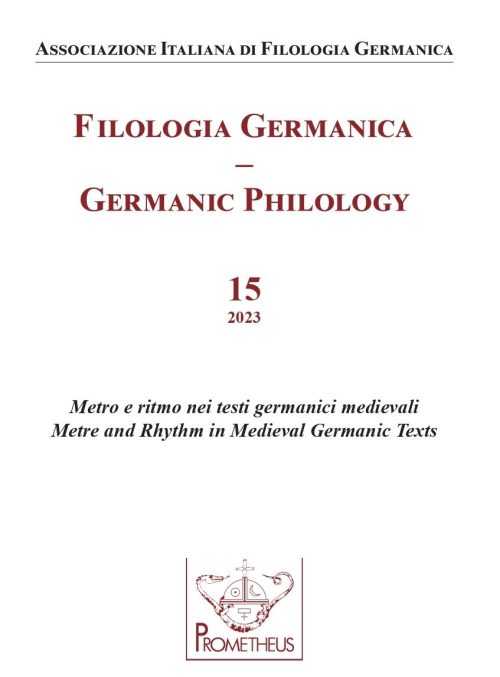Syntax and metrical evolution in the medieval English Alliterative tradition
DOI:
https://doi.org/10.14672/fg.v15i.2429Parole chiave:
medieval English, allitteration, sintaxAbstract
This paper presents a study of fourteen medieval English alliterative poems ranging in date from the seventh to the fourteenth century. Passages from these poems were analyzed for syntactic structure, and individual words were coded for part of speech and classified as either lexemes (nouns, adjectives, etc.) or functors (prepositions, determiners, etc.). Results show that the increasing line length of alliterative poems during the Middle Ages correlates with, and potentially could have been caused by, the increase in functors that occurred as part of the transition of English from synthetic to analytic syntax. This paper also examines the growing bifurcation of the long line (a result of the a-verse increasing in length at a greater rate than the b-verse) and the shift of the locus of metricality from the half-line to the long line. It is shown that these effects of syntactic change correlated with the decline of the alliterative tradition and the nativization of a new tradition of syllabic-accentual verse. It is plausible to conclude that the new tradition was a better “fit” for the emergent structure of English. Findings from this study corroborate recent claims that the English alliterative tradition was active even during the centuries preceding the fourteenth-century Alliterative Revival.
Pubblicato
Fascicolo
Sezione
Licenza

Questo lavoro è fornito con la licenza Creative Commons Attribuzione - Condividi allo stesso modo 4.0.
CC-BY-SA



